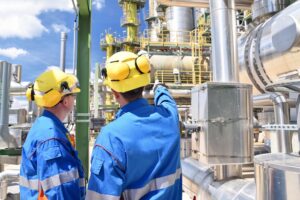The U.S. Chemical Safety and Hazard Investigation Board (CSB) issued a call for greater use of remote isolation equipment at U.S. chemical facilities, the board announced July 25. A new safety study titled “Remote Isolation of Process Equipment” offered recommendations for the U.S. Environmental Protection Agency (EPA) and Occupational Safety and Health Administration (OSHA), as well as the American Petroleum Institute (API), an industry association.
The CSB’s new safety study, based on its investigations of several catastrophic chemical incidents in recent years, concludes that the chemical industry hasn’t fully recognized that effective remote isolation of process equipment is critical to quickly stopping releases of hazardous substances, helping prevent fatalities and serious injuries to workers at chemical facilities, reducing damage to facilities, and better protecting communities and the environment.
The board’s report made the following recommendations for the API, the EPA, and OSHA:
- The API should revise its industry guidance documents to apply to facility types beyond refineries and include criteria for when remote isolation devices that can be automatically activated or remotely activated from a safe location should be required for processes involving highly flammable or toxic materials and atmospheric storage tanks.
- The EPA should incorporate requirements for an evaluation of the need for remote isolation capabilities into its Risk Management Program (RMP) Rule, which regulates processes involving highly flammable or toxic materials.
- OSHA should include requirements for an evaluation of the need for remote isolation capabilities in its process safety management (PSM) standard, which regulates processes involving highly hazardous chemicals.
In the report, the CSB highlighted several incidents it has investigated, including:
- The 2005 Formosa Plastics Propylene Explosion, during which 16 workers were injured, a process unit was heavily damaged, and a nearby school was evacuated.
- The 2007 Valero McKee Refinery Propane Fire, in which workers were injured and the refinery was evacuated and shut down for several months.
- The 2019 Philadelphia Energy Solutions (PES) Refinery Fire and Explosions, when roughly 676,000 pounds (lb) of hydrocarbons and over 5,200 lb of highly toxic hydrofluoric acid was released; the estimated property damage loss was $750 million; and the refinery ultimately closed permanently.
The board asserted that its recommendations would enhance safety measures and mitigate the consequences of incidents like the explosions and fires at chemical facilities by ensuring remote isolation capabilities are in place, preventing the escalation of releases of hazardous substances.
The board investigates industrial chemical incidents and makes safety recommendations to companies, industry organizations, labor unions, and regulatory agencies, including the EPA and OSHA, but it doesn’t issue citations or fines. Board members are appointed by the president subject to Senate confirmation.
CSB investigating ammonia release in Virginia
On August 1, the CSB announced it’s launching an investigation into a hazardous ammonia leak that occurred the evening of July 31 at Cuisine Solutions, Inc., a food processing facility in Loudon County, Virginia. The release led to the hospitalization of 33 workers, with some in serious condition, according to the CSB.
The facility, located about 30 miles from Washington, D.C., is a commercial food preparation plant with approximately 350 employees, according to the board.
“This is a very serious incident that injured dozens of employees at the facility and put many others at risk,” CSB Chairperson Steve Owens said in a statement.

